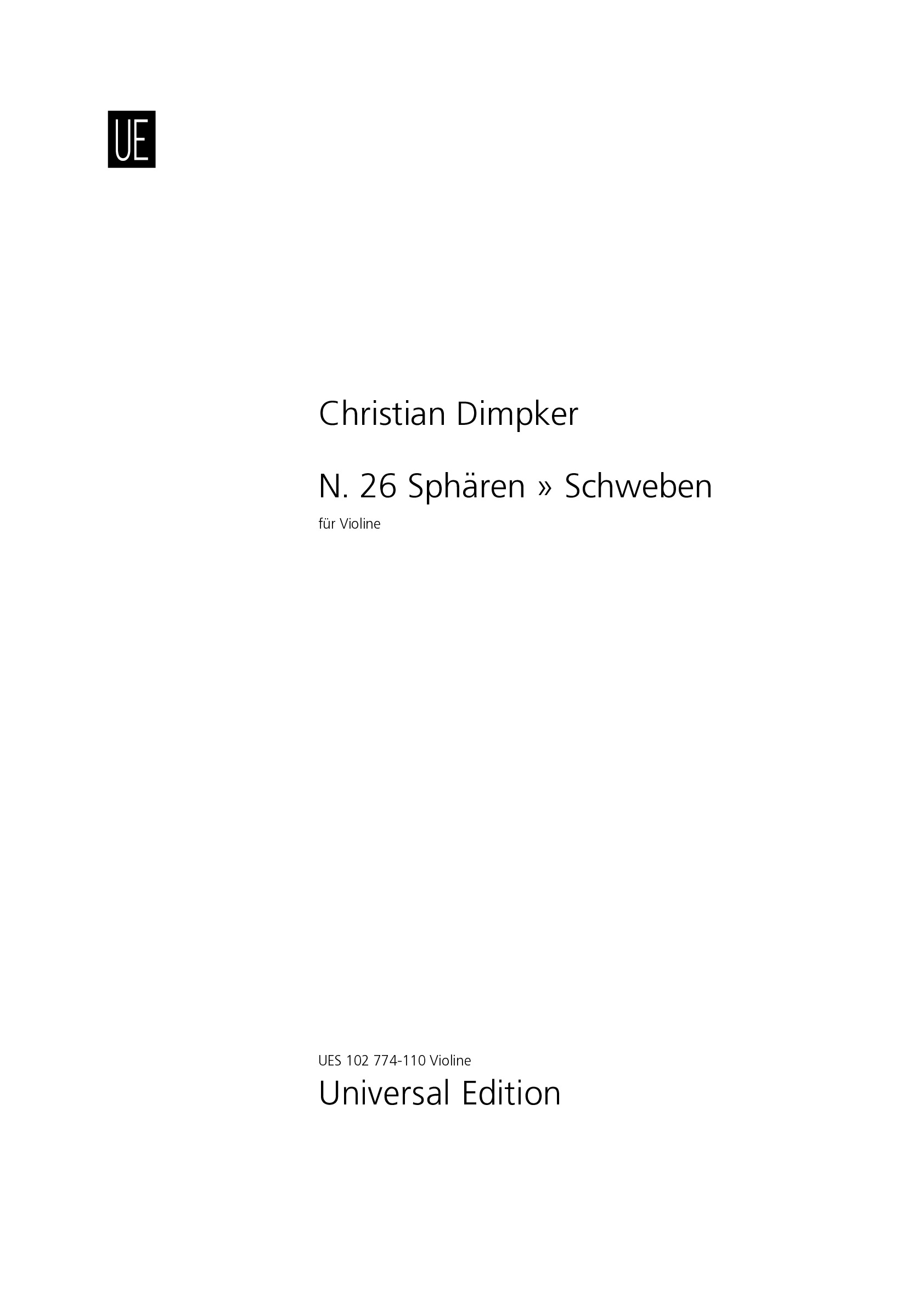

Christian Dimpker
N. 26 Sphären » Schweben
Duration: 16'
Solos:
violin
N. 26 Sphären » Schweben
Sample pages
Work introduction
Sphären » Schweben is an attempt to overcome orchestral sound production. The string instruments only appear as mere shadows of their former self. They are transformed, dissected, become a tornado of microparticles, step back into this world through loudspeakers and mirrors. The capabilities of the instrumentalists are employed in a new manner – for the destruction of their instruments, to transform music to light or to play metal plates. Not only the instrumental tones are doomed to die, death is also closing in on instruments as tone distorters. Music continues to progress; into abstract worlds. Notation is becoming a vehicle for the visual arts, for electroacoustics, for motion – for actionism. Traditionalism may only delay this development, but cannot stop it. We need a new world, a new music and a sound beyond outdated concert houses.
Instruments
4 violins I (V. I), 3 violins II (V. II), 3 violas (Va), 2 violoncellos (Vc.), 2 contrabasses (Kb.), 8 cymbals I (Bck. I), 8 cymbals II (Bck. II)
Audio effects/synthesis
Filters (Flt.), reverberation (Rvb), ring modulation (RM), phase vocoder (Voc.), frequency modulation (FM), delay (Dly), distortion (Dist.)
What is necessary to perform this work?
The disposal of the instruments may be observed on p. V. Two violins I and two violins II are supposed to hold big acrylic glass mirrors in front of their bodies. They have the same size and serve two purposes. Firstly, they serve as loudspeakers and, secondly, they reflect the light of the spots that are directed at them. All actions of these string instruments are recorded beforehand and are then played back through transducers (exciters) attached to the mirrors. Each mirror-speaker plays back the actions of the instrumentalist holding it, e. g. the mirror-speaker B of V. I [2] only plays back the sounds produced by V. I [2]. Every player controls the playback of her recording. The players themselves decide into how many parts they want to split their recordings. The synchronisation with the other players has to be exact. When the spots are turned on, they always shine upon the same mirrors (and are hence not turned). The instrumentalists then change, as depicted in the score, the angle of incidence to direct the light towards the players or loudspeakers. The four players are supposed to stand on podiums in order to be able to reflect the light above the workbench. No (additional ADSR) envelopes are notated for the synthetic sounds. The interpreters should keep this in mind and realise them at their own discretion.

